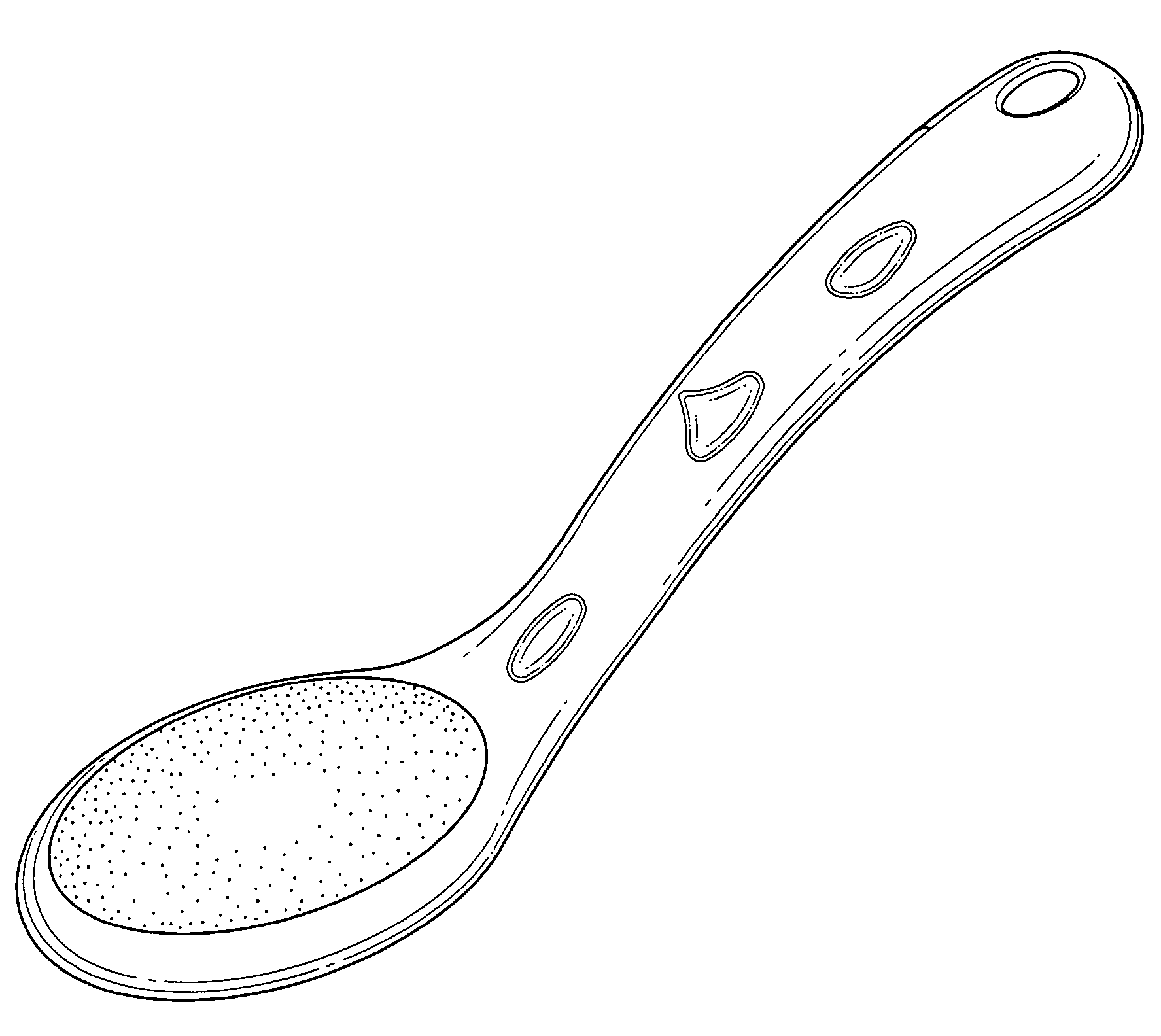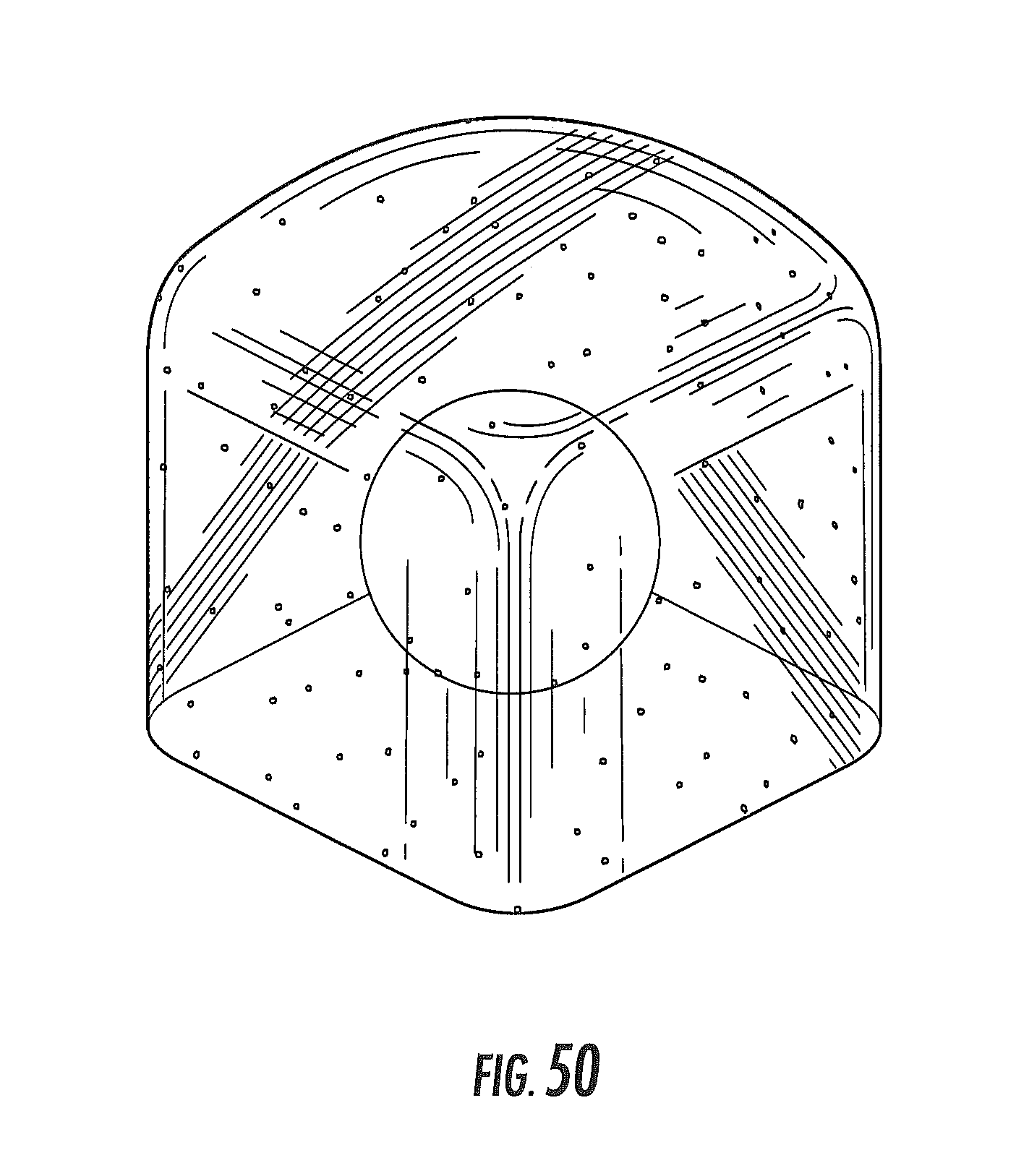by Stacie Farina and Will Kehoe
A design patent can be a valuable asset in a patent portfolio for protecting the “ornamental design for an article of manufacture,” namely the visual characteristics embodied in, or applied to, an article.[1] However, questions often arise regarding the eligibility of a particular design for a design patent. For example, in the commercial production of an article, there may be production practices that inherently include manufacturing inconsistencies, fabrication margins, and human error. These practices can sometimes create a design element, such as a patterned surface ornamentation, that is distinctly recognizable to the human eye, but also exhibits a slight variance in the overall “look” of the design element from article to article. Is such a design element definite enough to be eligible for a design patent? If so, what is the scope to which the design patent can be enforced? A review of the administrative standards of the Manual of Patent Examination Procedure (MPEP), combined with a survey of granted design patents, suggests that design patents are likely to meet the definiteness standard when they (1) claim and illustrate particular features of a design for an article and (2) avoid explicitly claiming shapes and appearances not shown in the submitted drawings. Furthermore, an analysis of case law from the Court of Appeals for the Federal Circuit (Federal Circuit) and decisions from the Patent Trial and Appeal Board (PTAB) suggest that design patents following such guidelines may be enforceable against designs that are not identical (e.g., designs that have slight changes in the design element itself) in an infringement action. In light of these suggestions, this article outlines some of the potential considerations and risks that come with navigating the eligibility and enforcement standards of design patents.
Administrative Standards:
As a starting point, the MPEP states that “… there is no per se rule…” for definiteness and that “…the definiteness of claim language must be evaluated on the facts and circumstances of each application.”[2] Broadly, the design “…must be a definite, preconceived thing, capable of reproduction and not merely the chance result of a method.”[3] More specifically, the description of a design patent application fails to enable when “a designer of ordinary skill in the art” cannot “make an article having the shape and appearance of those other embodiments, modified forms, or ‘variations’ and ‘equivalents’ referred to in the description in the absence of additional drawing views.”[4] As such, a claim should be rejected as “nonenabling and indefinite” when the drawings are “… insufficient to permit an understanding of the shape and appearance of the design claimed….”[5] To help avoid an indefiniteness rejection, a narrative description may be used in the specification to supplement the drawing disclosure and define the scope of the design patent.[6] However, a claim will be rejected if the narrative description in the specification (1) refers to embodiments or modified forms not shown in the drawing; (2) includes vague and nondescriptive words such as “variations” and “equivalents;” or (3) has a statement indicating that the claimed design is “…not limited to the exact shape and appearance shown in the drawing…”[7]
Application of the Standards in Design Patents with Variation Protection:
With these administrative standards in mind, a review of the prosecution history of granted design patents suggests two points. First, it seems likely that the PTO will grant a design patent for a disclosure that claims and illustrates particular features of a design for an article with variations. Second, it seems likely that the PTO will reject a design patent application when the application uses explicit language that claims or describes aspects of designs not illustrated in the drawings.
For example, in US D577,154 [8], the application originally had a description that made claims to “the randomness and variety of the size, number, shape, and distribution” of bubbles on a foot rasp handle (see FIG. 1). The examiner rejected this language as an “… attempt to broaden the scope of the claimed design beyond that shown in the drawings.” [9] The applicant decided to cancel the language from the specification, and the design patent was moved to allowance. [10]

FIG. 1: The foot rasp handle of U.S. Patent No. D577,154 with bubbles on the handle.
In another example, US D657,493 [11] related to claiming design elements in different locations than those shown in the drawings. The application claimed a “design for a light fixture” (see FIG. 2) and originally stated in the description that “the positioning of the suspended crystals along and about the support strand may vary from that illustrate[d] in the accompanying drawings.” [12] This language was rejected because it described “additional appearances of the claimed design that are not shown.” [13] The description was amended to state that “the location of each suspended crystal-like element about the corresponding support strand is random,” which moved the application to allowance. [14]

FIG. 2: The light fixture design of U.S. Patent No. D657,493 with suspended crystal-like elements.
Similarly, in US D723,766 [15], the applicant originally described in the specification “… a confectionary according to the claim design… may include ‘specs’ of any shape(s) or spacing” (see FIG. 3). The examiner rejected the claim as indefinite and nonenabling because the specification “… attempt[ed] to broaden the claim’s scope to include undefined types of other designs that cannot be determined from the drawings.” [16] To overcome the rejection, the applicant amended the specification to state, “… the ‘specs’ shown in the exemplary embodiments… represent particles of opaque material, which are arranged throughout the article in a random fashion,” and noted that the language was proper as it had been used in other design patents. [17] This amendment moved the design patent to a condition of allowance.
 FIG. 3: The confectionary article of U.S. Patent No. D723,766 with particles of opaque material.
FIG. 3: The confectionary article of U.S. Patent No. D723,766 with particles of opaque material.
Scope of Enforceability:
A review of Federal Circuit case law and PTAB decisions suggests that a design patent, which clearly shows a feature in the drawings (e.g., a speckled or random design), can be infringed by a design with slight modification or variance. However, such a question is likely to be for a jury to decide.
The standard for determining design patent infringement is known as the “ordinary observer test” and is a question of fact. [18] The ordinary observer test states that a design patent is infringed when “if, in the eye of an ordinary observer, giving such attention as a purchaser usually gives, two designs are substantially the same, if the resemblance is such as to deceive such an observer, inducing him to purchase one supposing it to be the other, the first one patented is infringed by the other.” [19] The test “applies to the patented design in its entirety” and “minor differences between a patented design and an accused article’s design cannot, and shall not, prevent a finding of infringement.” [20]
Under this framework, there are some infringement (and definiteness) cases in which the accused infringing design has slight variations from the illustrated design, and the plaintiff was not precluded from suing for infringement. For example, in a case involving a design patent for heat reflective lining for outdoor sporting gear, the Federal Circuit held that factual issues existed as to whether an accused product with varying wave thickness infringed a design patent with uniform wave thickness. [21] Notably, the court found that although the “wave” design varied in terms of “orientation, spacing, and size,” it was proper that a factfinder analyze the design as a whole to determine infringement. [22] Thus, there is the potential that a jury applying the ordinary observer test could find that the variations in “orientation, spacing, and size” of the wave pattern still infringed the design patent.
Similarly, in a PTAB decision involving an inter partes review of a design patent for insulation material, the Board found that variations in a swirl pattern, due to the fabrication method of the insulation, were “insignificant.” [23] Specifically, the Board stated, “… the swirl patterns are not specifically identical to those of the claimed design due to the abstract and formless nature of fibrous strands that make up such insulation material. We are persuaded that any difference in swirl pattern is, however, insignificant and due to inherent fabrication methods of insulation material.” [24] Although this decision involved an analysis of anticipation and obviousness, the PTAB board noted that “the ‘ordinary observer test’ for anticipation is the same test used for infringement.” [25] Thus, there exists an argument that slight variations in a product due to a fabrication process do not necessarily prevent a finding of infringement.
Potential Risks:
As noted above, enforcing a design patent will likely require an application of the “ordinary observer test.” The ordinary observer test is a “factual inquiry,” which can introduce variance and risk in the enforcement of the design patent due to the inherent uncertainty of sending such a question to a jury. Additionally, while the Columbia Sportswear example did not prevent a factfinder from analyzing the variation in the “orientation, spacing, and size” of the wave design to determine infringement, a court may hold differently for a different design element. Lastly, while the PTAB has held that some differences in patterns due to fabrication may be “insignificant,” this is a holding from an administrative law body. Thus, a federal court may decide to rule differently on the matter.
[1] 35 U.S.C. § 171; U.S. Pat. & Trademark Off., Manual of Patent Examining Procedure § 1502 (rev. May 2004), available at https://www.uspto.gov/web/offices/pac/mpep/s1502.html.
[2] Id. § 1504.04(II).
[3] Id. § 1502.
[4] Id. § 1504.04(I).
[5] Id.
[6] Id.
[7] Id.
[8] U.S. Patent No. D577,154 (issued Sep. 16, 2008).
[9] Id.; Non-Final Office Action dated Apr. 15, 2008, p. 3.
[10] D577,154; Applicant Amendment and Response submitted May 13, 2008, p. 1.
[11] U.S. Patent No. D657,493 (issued Apr. 10, 2012).
[12] Id.; Non-Final Office Action dated Sep. 28, 2011, p. 3.
[13] Id.
[14] D657,493; Applicant Amendment and Response submitted Dec. 10, 2011, p. 1.
[15] U.S. Patent No. D723,766 (issued Mar. 10, 2015).
[16] Non-Final Office Action dated Apr. 12, 2012, p. 2-3.
[17] D723,766; Applicant Amendment and Response submitted July 12, 2012, p. 3-4.
[18] Columbia Sportswear N. Am., Inc. v. Seirus Innovative Accessories, Inc., 942 F.3d 1119, 1129 (Fed. Cir. 2019).
[19] Gorham Co. v. White, 81 U.S. 511, 528 (1871).
[20] Crocs, Inc. v. Int’l Trade Comm’n, 598 F.3d 1294, 1303 (Fed. Cir. 2010).
[21] Columbia Sportswear, 942 F.3d at 1119.
[22] Id. at 1130–31.
[23] Johns Manville Corp. v. Knauf Insulation, Inc., No. D631,670 S, 2017 WL 378547, at *16 (P.T.A.B. Jan. 11, 2017).
[24] Id.
[25] Id. at *10.
